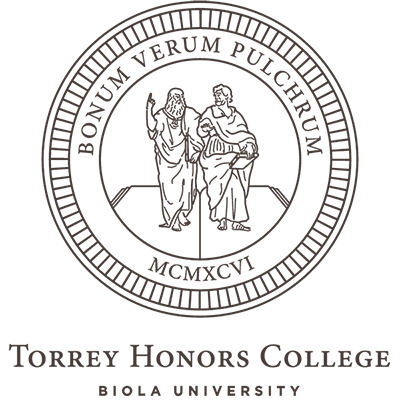A scene from The Canterbury Psalter (12th century)
Blog
“God Rested in Himself”
On the seventh day, God rested from all his works (Gen 2:2). The OT itself, and then the NT, especially Hebrews, shows some interest in the meaning of divine rest. Augustine brushes up against this notion of divine rest in several places (the very end of Confessions, the appropriate place in City of God, and the various Genesis treatises he wrote or started). While Augustine sees in this repose something of God’s eternity, he also tends to involve humans in the deeper sense of God’s resting: God works in us now but will repose in us at last, etc. [I thought this would be easy to look up, but it turns out I’ll need to get at least a half dozen books open in order to be properly attentive to a theme Augustine revisited often.] Thomas Aquinas asks (ST I Q73a2) whether it is…
“The Father is Greater Than I”
In John 14:28, Jesus says “the Father is greater than I.” There is one wrong way to understand his meaning, and two right ways. The wrong way is the Arian heresy or some other kind of subordinationism. People who take this view think that with these words Jesus intends to teach that the Son of God is of a lower status or order of being than God the Father. He’s doing some ontology, and putting himself ontologically lower than the Father, claiming to be less than God in the sense of not God, not truly or fully God. But what about the two right ways of understanding “the Father is greater than I?” They are complementary rather than contradictory. The first is that Jesus is referring to himself according to his human nature, assumed by incarnation: the Father is greater than the Son’s humanity…
On Frittering
From Frederick Faber’s Notes on Doctrinal and Spiritual Subjects, volume 2.
Distinction Between Creation and Generation
The Nicene Creed says the Son is “begotten, not made.” This contrast is one of the ways the creed clarifies its teaching about what begetting, or generation, is; by contrast with what it is not. It’s a statement of Christology, obviously. But the same contrast also helps us in the other direction, as a statement about cosmology or the doctrine of creation. What’s creation? Not begetting, not generation, not the internal coming-forth of a necessary relation in the singular divine essence. In other words, when you learn to call the Son “begotten, not made,” you learn to call creation made by contrast to begotten. You’re on your way to affirming creation from nothing more clearly, even though all you were trying to do was be clear about Christology. I like to think I could make that argument historically, showing that the doctrine of creatio…
“It Is The Lord!” (Sermon on John 21)
Here’s the video and written text of a sermon I preached at my home church on April 22, 2024. Because the written text was originally a script for oral delivery, it has more hard returns than necessary, and even / a few slashes / that I dropped in to make sure I didn’t run words or phrases together in way that might / confuse the ear of the listener. I. The Story After the Stories We’re focusing this morning on a very special story from the last chapter of the Gospel of John.Its nickname is “The Miraculous Catch/ of Fish,” or sometimes, “The Second Miraculous Catch/ of Fish,” because there was a previous one (Luke 5), but this story takes place after Christ has risen from the dead. And that changes everything. I believe it must be the final recorded miracle of Jesus. It’s…
Proportional Blessing
When I guest preach in a brand new place, it’s likely to be on Ephesians 1:3-14. I’ve lived in that passage long enough that I know what I’m doing in there, I’ve studied every word, and I have a good sense of where everything is. I can reach into it and bring out the parts that I think will speak to this congregation. I feely admit that my Ephesians 1 sermon is what some traditions call a “sugar stick” sermon. But I also never tire of it, and there’s always something new in it for me. I recently spoke at Sovereign Hope in Missoula (Hi Fongs! Hi Tyler!), and as I unfolded the riches of Ephesians 1 this time and explored the meaning of “every spiritual blessing,” I found something new. I’m not sure what to call it, but it has something to do…
How to Learn from Other Kinds of Christians
The Student Ministry at my church (middle school and high school) has been studying John 13-17 for a few months. The Pastor of Student Ministry invited me to join their Wednesday night meeting to speak about Christian unity, with a special focus on how to think about all the different denominations that exist. I spoke for about 40 minutes before the whole group broke up into small groups for discussion. While I didn’t write up anything official, I did prepare some talking points and wanted to post them here. (Don’t expect much more than talking points, dear reader.) Jesus prayed in John 17:20-23, asking the Father that those who believe in him would be unified: “that they may all be one, just as you, Father, are in me, and I in you.” When we hear about being One just like the Father and Son…
“Quite …Able to Communicate”
There’s a little story in Brother Andrew’s classic book God’s Smuggler that always comes to mind when I think about what Christians have in common. The gist of it is that two believers with no shared language find a way to communicate anyway via their shared love of the Bible. I first heard the story as a little kid, when my dad read it to me from the little Penguin paperback edition of the bestseller (1967, co-authored with John and Elizabeth Sherrill). And I’m probably guilty of re-telling it quickly, with insufficient detail, to make a point about Christian unity. So here’s the detail, from ch. 15 of the original edition (I don’t have, and haven’t consulted, the Chosen/Baker updated edition, which is the official best way to get the whole book). Anyway, for my own future reference, here’s the story. Brother Andrew (real…
Coordinating Exegesis
Gregory of Nyssa takes up the Nicene faith and sings it in the key of life: We believe in the Father of our Lord Jesus Christ (1 Pet 1:3) who is the fountain of life (cf. Ps 36:9), and in the only-begotten Son of the Father (Jn 3:14, 18) who is the Author of life, as the Apostle says (Acts 3:15), and in the Holy Spirit of God, concerning whom the Lord said, it is the Spirit who gives life (Jn 6:40).1 You see what he is doing: Taking the theme of life, and knowing that God is Father, Son, and Holy Spirit, Nyssa looks through Scripture to find passages where each person of the Trinity is linked to life. What he finds is the Father as fountain, Son as source, and Spirit as giver. This corresponds neatly with both Matthew 28:19 (the sequence…
Grace Times Three (Davenant on Colossians)
When John Davenant (1572-1641) hits the word “grace” in the opening of Colossians, he has much to say. His Colossians commentary is admirably copious (about 900 pages). But he’s never just filling up pages or chasing word count. Davenant on Colossians has a constant eye for theological interpretation. By way of greeting, Paul says “grace to you.” Earlier Davenant had acknowledged the word’s use (alongside “truth”) as a salutation, Here he digs in and informs us that the term grace denotes three things : First, the gratuitous act of the Divine will accepting man in Christ, and mercifully pardoning his sins. This is the primary meaning of this word, which the Apostle every where enforces. By grace are ye saved (Eph 2:5); Being justified freely by his grace (Rom 3:24). This gratuitous love of God is the first gift, says Altissiodorensis [William of Auxerre],…
Erskine on the Son’s Presence
Ralph Erskine (1685-1752) wrote voluminously but not systematically, so tracing out a line of thought in his work can be a challenge. I’m jotting down some notes here on a line of thought I’d like to pursue sometime. Erskine’s got a theology of the presence of the Son which I think presupposes a notion of trinitarian mission; it presupposes it but doesn’t quite make it explicit. In the places where I expect him to say “the Son from the Father,” he tends to say “God in Christ.” He does have a high, traditional trinitarian theology, but when he speaks (as he often does, quite resourcefully and deliberately) of direct, experiential contact with God in Christ, he tends not to connect the trinitarian dots. Of course “God in Christ” means the Father sent the Son, and Erskine knows that. But his theology offers a chance…
On Consideration, Book V (Bernard of Clairvaux)
One of the last writings Bernard of Clairvaux (1090-1153) completed was his Five Books on Consideration. The whole work is fascinating and worth reading: it’s essentially advice to one of his former students who had become bishop of Rome (Pope Eugene III), explaining how to manage such great obligations without losing his soul. The early books feature meditations on virtue, practical advice on schedule management and delegation, an apology for the results of the second crusade, and plenty of pointed directions for how to reform the church’s own government –these catalogs of abuses and corruptions help explain why On Consideration became a favorite text among reformers like Wyclif and Erasmus, and especially among capital-R Reformers like Calvin. But the real treasure is Book V, chapters 6-14. Here in the final 25 pages or so, Bernard turns the reader’s attention to the things above, and…
But Super Cahoots
People who tend to think of the three persons of the Trinity as three distinct individuals, each with their own individual center of consciousness (maybe a differentiated self-awareness knotted together with a matching other-awareness), faculty of willing, and so on, are what we loosely call “social trinitarians.” I put this in scare quotes because it’s a notoriously imprecise label that has probably served more to confuse issues than it has succeeded to pick out any particular view. It’s one of those conventional labels that you have to use and then immediately define specifically; so it loses the advantages that labels are supposed to have: quick, clear communication. But when it functions adequately, the “social” in “social trinitarian” is supposed to evoke the old social analogy for the Trinity: the persons of the Trinity are like three people in a close relationship. Perhaps the label…
Mark’s Start
If you’re already familiar with the other Gospels, Mark can be startling. How in the world can he leave out so much? How can he start the story of Jesus without explaining either the virginal conception or the genealogy of Jesus? How can he bring in John the Baptist with no historical backstory? How can he just start right in with the heavens being torn open and Jesus hearing the voice of the Father saying, “You are my beloved son”? Even if you affirm Mark’s chronological priority, and on that basis believe that the proper form of these questions ought to be flipped around (“Why do Matthew and Luke add so much?”), Mark’s narrative parsimony is remarkable. His “suddenly this happened!” storytelling strategy leaves you wondering how we got here, even when we just got here. Consider the baptism of Jesus in the Jordan….
“To Offer Him Any Attention”
There’s a scene near the end of Pride and Prejudice where Mrs. Bennet has a social opportunity to say characteristically foolish things to Mr. Darcy. Alert readers are apprehensive! But the narrator reassures us: “Mrs. Bennet luckily stood in such awe of her intended son-in-law that she ventured not to speak to him, unless it was in her power to offer him any attention, or mark her deference for his opinion.” I thought this was an odd use of “attention,” which ought to mean “the act of attending or heeding; the act of bending the mind upon any thing.” This definition is from Samuel Johnson’s dictionary, nearly contemporary with Austen (P&P was published 1813; Johnson’s dictionary was published in its first edition 1755, fourth edition 1773). But it wouldn’t make much sense to say that Mrs. Bennet didn’t speak to Mr. Darcy except to…
Iambics to Seleucus (Amphilochius)
Amphilochius of Iconium (ca. 345-404) was the bonus Cappadocian: he did not attain unto the three, and his works are not well preserved for us, but he was right there with Basil and the Gregs, and his theology was very influential in the early centuries. I ran across a nice little sequence of lines from his Iambics to Seleucus, and spent some time studying them. These lines didn’t end up working for the project I was writing, but I didn’t want to forget them. They seem to be rehearsing Trinitarian orthodoxy circa 400, and so the fact that they don’t try to boast much originality is one of the best things about them. We have an early pro-Nicene working out the best ways to say things, making sure to use the key terminology with conspicuous correctness. So here they are: For the eternal Trinity…
Precept, Prayer, Promise
God commands us to do a good thing. We hear the precept, but what if we despair of our ability to carry it out? What can we do? We can ask God for divine assistance, or even ask him to do the commanded thing for us (or through us, or to us, or within us). In response, he promises to do so. Looking back on this three-step sequence, we might even find ourselves confessing that God intended to make the promise anyway, and so he gave the command in order to prompt us to ask for the gracious help. Precept-Prayer-Promise. It might seem convoluted, especially when drawn out to three beats. Augustine noticed the sequence and prayed to God in his Confessions, “Give what you command, and command what you will.” That sounds like only two beats (give=promise, command=precept), but of course we’re hearing…
Trinity in the Bible (Handout)
One of my favorite things to do as a teacher is show Christians how to see the Trinity in the Bible. I like to teach a three-session series on the topic, looking at five key passages (John 1:1-3, Matt 28:19, Gal 4:4-6, 2 Cor 13:14, and Eph 2:18). My goal is to spend enough time with each passage to sense its own dynamics, understand it in context, and develop the confidence to paraphrase its meaning. As Bible students get more comfortable with the key ideas, their paraphrasing can take many forms. But in a short course at the congregational level, I make sure to introduce the traditional terms (essence, person, preexistence, eternal generation, inseparable operations, etc.) and to treat them as helpful guidelines provided to us from the Christian church of the ages. The emphasis is sola scriptura (since God alone is fit to…
About This Blog

Notes, quotes, thoughts, trial balloons, reviews, Twitter threads that turned out okay, position papers, miscellanies. Lightly edited theology writing from Fred Sanders.


